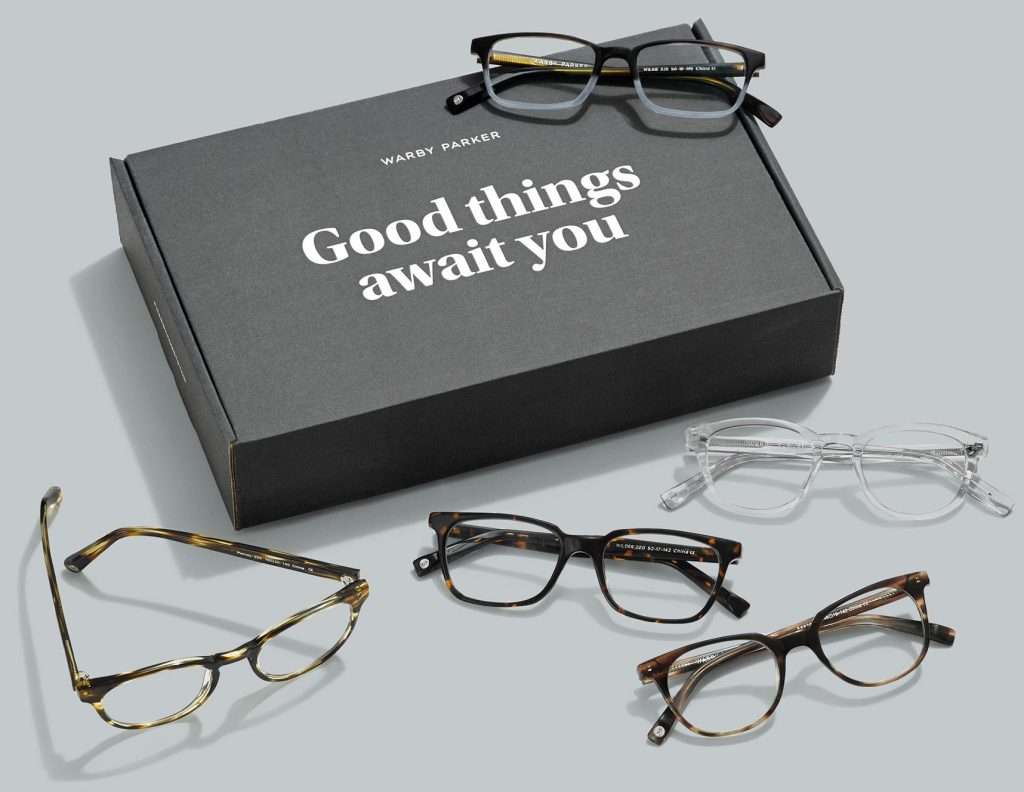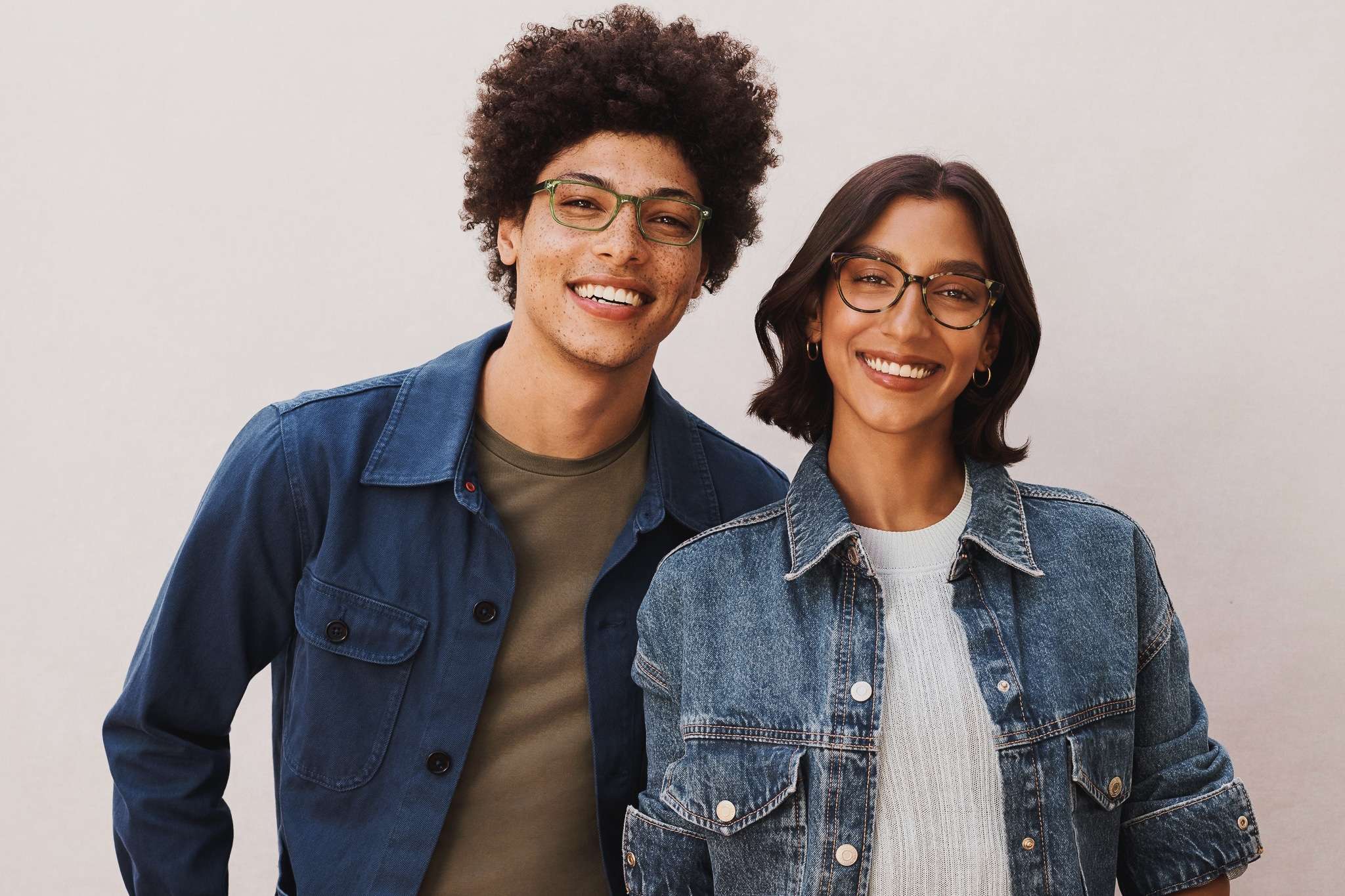In an industry first, leading eyewear brand Warby Parker is turning used lenses into sustainable frames through a novel technology and new partnership.
Aiming to close the loop on eyewear waste, Warby Parker, the popular eyewear company known for its one-for-one giving model with every purchase, has partnered with manufacturer Eastman to develop a recycling program for its used demo lenses.
Under the new partnership, clear plastic demo lenses used on Warby Parker frames that are tried on for fit in optical labs or used in shipping frames to keep their shape, will be broken down into a sustainable acetate to make new frames.
Warby Parker says it spent years researching downstream solutions and different materials for the plastic lenses in order to decrease the impact, but all options failed to prove effective until now.
“From day one, Warby Parker has set out to find innovative solutions to everyday problems—and along the way, we’ve taken a stakeholder-centric approach. We’re committed to evaluating how our operations impact our employees, customers, and the environment, and our partnership with Eastman exemplifies this commitment,” Neil Blumenthal, co-founder and co-CEO of Warby Parker, said in a statement.
According to Warby Parker, some 600 million frames are produced annually, creating more than 5,000 tons of waste annually.
The eyewear industry has seen a rise in sustainably-produced frames in recent years, using bioacetate and other low-impact materials such as recycled metal and wood, but it still lacks notable recycling solutions, particularly for plastic lenses.
Bioacetate frames
Recycling the plastic demo lenses started last summer, with several Warby Parker labs sending their demo lenses to Eastman’s Tennessee facility. There, a carbon renewal technology breaks down the plastic to a molecular state that is then reused to create what’s being called Eastman Acetate Renew. The acetate is exclusive to Eastman. It is 60 percent bio-based and 40 percent certified recycled material.
“Warby Parker’s commitment to reduce the impact of their products on the environment has been evident throughout this project. Eastman appreciates their commitment to take action and change the status quo,” said Scott Ballard, Eastman’s vice president and general manager of specialty plastics. “The demo lens to Acetate Renew breakthrough is the first of what we expect to be many examples of Eastman customers leveraging our molecular recycling technologies to divert material from landfill and lower carbon emissions.”
According to the company, Acetate Renew is chemically and physically identical to traditional acetate but with a lower environmental impact. Warby Parker will begin using the material into some of its frames this year.
Bioacetate is being used in a number of sustainable frames. Los Angeles-based eyewear brand Garrett Leight just recently released its first collection of sustainable frames made from the material. Last week, celebrities Zayn Malik and Jason Momoa launched new frames with their eyewear brand partners Arnette and Electric. Both of those collections feature bioacetate frames.
Ethical business
The announcement from Warby Parker builds on its commitments as a certified B Corp and Public Benefit Corporation. Warby Parker has always been mission led; since it launched in 2010, its Buy a Pair Give a Pair program has donated more than ten million eyeglasses to people in need.
In its 2020 Impact Report, Warby Parker said its aim was to set environmental targets by vendor and material, as well as implementing environmental criteria to screening processes for future suppliers. “The more volume we have with a vendor, the more we can drive change,” the company said. But it noted that government regulations and the scale of its orders also play a part.
“We hope that others in the eyewear industry will join us as we work towards solutions to lessen our impact on the planet and its people,” Blumenthal said.

Warby Parker was valued at more than $6 billion with revenue of more than $400 million last September, just after it went public in a direct listing.
Last month, it announced that it was shifting toward offering full eye care services. Historically, consumers would have an eye exam separately, and then mail in or visit one of Warby Parker’s brick-and-mortar locations (166 as of last month) to get frames. That’s proven challenging, as most optometrist locations also offer optician services.
Some of Warby Parker’s most recent hires have been optometrists as it makes the shift to full-service eye care.
“We’re at this kind of interesting transition where historically we’ve been a glasses company and eyeglasses brand and now, we’re transitioning to becoming a holistic vision care company,” co-founder and CEO Dave Gilboa told CNBC. “Where, in addition to buying glasses from us … Now, an increasing number of our customers are also getting their eye exam and prescriptions from us,” he said.


